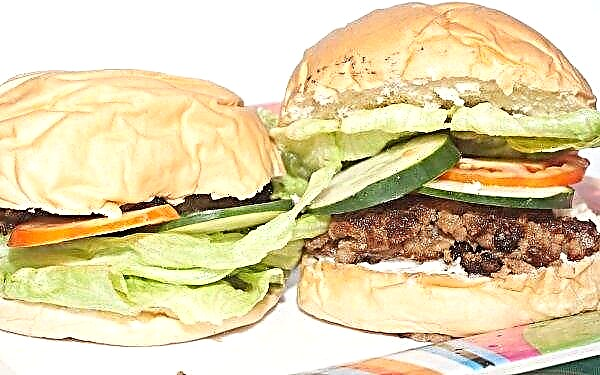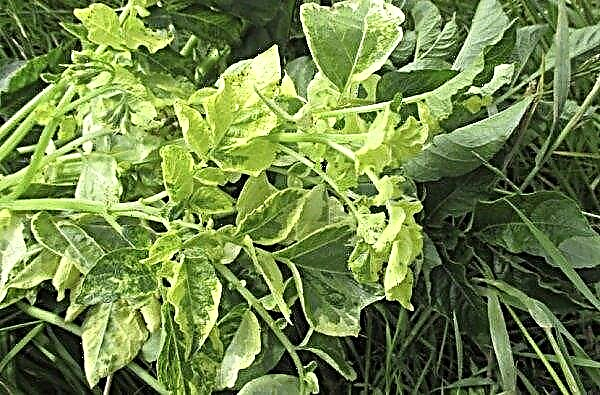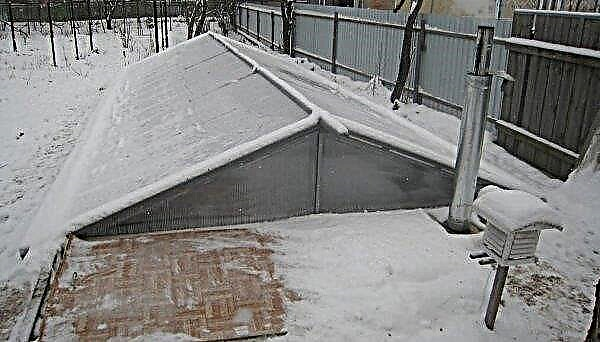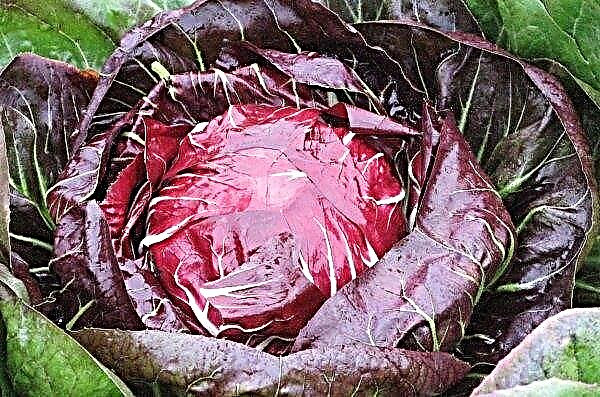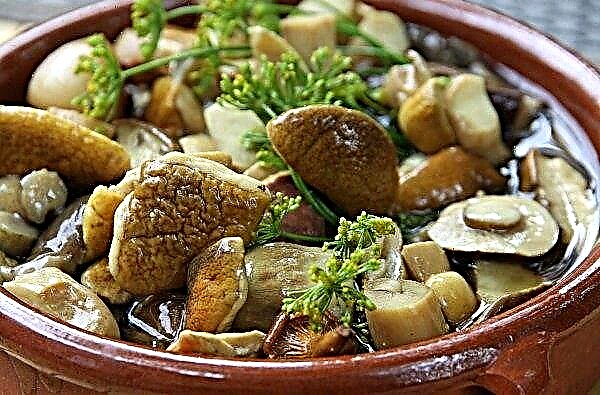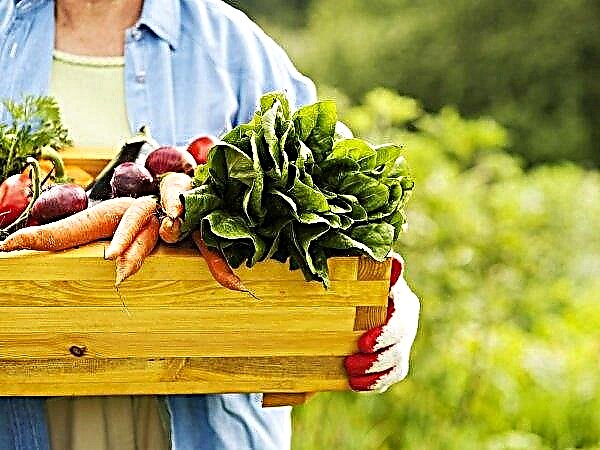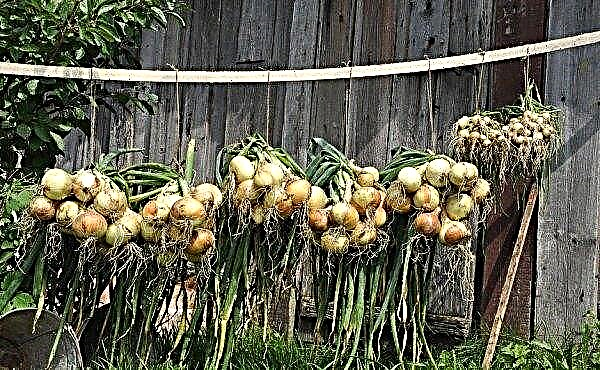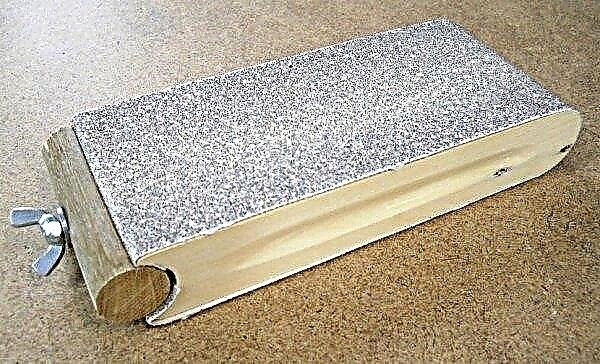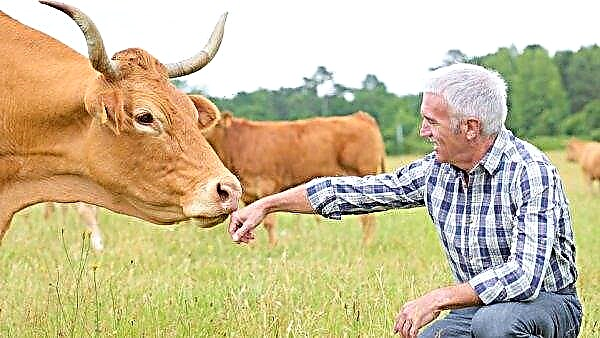White cabbage is a traditional vegetable on our table. It is consumed fresh, added during the preparation of various first and second courses, appetizers, and prepared for the winter in the form of preservation. And if the variety of cabbage does not play a special role in using the product fresh or in creating a dish, then not everyone is suitable for preservation. Grade Slava is suitable for workpieces, and it will be discussed further.
Selection and botanical description of the culture
Cabbage Slava was bred even before the war by the specialists of the Gribovsky Vegetable Experimental Station (now the All-Russian Research Institute of Selection and Seed Production of Vegetable Crops). The basis was taken foreign varieties. Among them, those that were able to grow and bear fruit well on non-chernozemic soils were carefully selected and improved. The works of breeders were very successful, and now the variety, which includes two species - Slava 1305 and Slava Gribovskaya 231, is successfully grown in any climatic zone.
Did you know? Pythagoras also knew about the healing properties of cabbage, so he was actively engaged in its cultivation and selection.
To understand how to distinguish cabbage Slava from other varieties, you need to carefully read its description and characteristics. Glory 1305 ripens in 125–130 days and gives fruits weighing 3,000–5,000 g, while the second species is ready to harvest a couple of weeks earlier, and its fruits weigh 2,000–3,000 g, but are denser and therefore lie a little longer. Otherwise, both species are identical.
Their heads are round or flat-rounded, in a section of yellow-white color. The leaves are collected in a socket that is raised above the ground. They have a rounded shape with slightly wavy edges and a finely wrinkled surface covered with a waxy coating. Their size is medium, the color is grayish-green, green.
Variety characteristics:
- marketable productivity - 570–930 kg / ha, maximum - 1250 kg / ha;
- diameter of a head - about 0.25 m;
- in agricultural engineering unpretentious;
- resistant to diseases and pests;
- calmly tolerates a lack of moisture;
- stored for 4 months.

Advantages and disadvantages
- Among the positive qualities it should be noted:
- resistance to temperature jumps;
- marketable condition;
- good taste;
- unpretentiousness;
- suitability for salting;
- not prone to cracking;
- not prone to the formation of a large number of peduncles.
- Disadvantages:
- poor resistance to cabbage keel;
- with a lack of lighting and nutrients, heads of cabbage will be loose.
Self-growing seedlings
The variety is suitable for both seedling and seedling cultivation. In the middle lane, they usually prefer to grow crops through seedlings, sowing seeds in greenhouses or in a special container at home.
Sowing time
Sowing seedlings in containers is carried out in early April. The timing of planting in the greenhouse depends on the climate of the region. It is necessary that by the appearance of seedlings the temperature should be kept at + 15 ... + 17 ° С in the daytime and + 10 ° С - at night. Given these data, in the middle lane in the greenhouse, sowing of the seed must be done before the last decade of April, but it is not advisable to start the procedure earlier than the last decade of March.
The soil
Regardless of where the seed is planted, the soil should be a mixture of turf land with humus in equal proportions. To protect the plant from the black leg, a little wood ash is mixed into the substrate.
Capacity for growing
At home, sowing can be carried out in ordinary boxes, and when the seedlings reach two weeks of age, transplant into individual containers. It can be cups or seedlings with cells with a size of at least 20 × 20 mm.
Seed preparation
Before sowing seeds, they must be processed. First, the soaking procedure in potassium humate is carried out to accelerate growth. The product must be diluted in the amount of one gram per liter of water. 12 hours after the start of soaking, the seed is washed under water and sent to a cold place (+ 2 ° C) for hardening. After a day, you can land.
Important! If the manufacturer indicated on the packaging with seeds that they had been processed, then the described procedures need not be carried out. It is enough to warm the seed in water with a temperature of + 50 ... + 55 ° С 20–25 minutes
Sowing seeds
A box with a height of sides of 5-6 cm is filled with earth, which is densely compacted. Top soil is watered with a solution of potassium permanganate for disinfection and left for three days. Then, on the surface of the earth at a distance of 30 mm, grooves with a depth of 10–20 mm are drawn one from one. In them, with an interval of 10 mm, the seeds are laid out. From above, the crops are sprinkled with earth, irrigated with a drip method and covered with a film.
Seedling Care
In order for the seed to germinate, the boxes must be placed in a dark place with a temperature of + 12 ... + 20 ° С. The emergence of seedlings requires an average of 4-8 days. After this time, if the seeds have already begun to hatch, the film is removed, and the box is transferred to a well-lit place with a temperature of + 15 ... + 18 ° С. For the normal development of seedlings, a daylight hours of 12-14 hours are needed, therefore it is necessary to carry out additional illumination of seedlings using fluorescent lamps. Irrigation is carried out as the soil dries.
After picking seedlings, the first top dressing of the plant is performed. In a liter of water, 2 g of potassium fertilizers and ammonium nitrate, 4 g of superphosphate are diluted. This volume of nutrient mixture is enough to feed 50 seedlings. 14 days after this procedure, another is carried out, but already using an aqueous solution of manure.
Did you know? The wild precursor of white cabbage is not known. AND. Decandol (a Swiss botanist) suggested that it grew on the south coast of England, northwest France, Denmark, and also on the Mediterranean coast of France and Italy. E. N. Sinskaya (Soviet scientist) claimed that the Mediterranean coast is the birthplace of culture.
Seedling hardening
The hardening procedure is carried out 10 days before planting. At first, it will be enough for a young plant to open a window 3-4 hours a day in the room where it is located. In a couple of days, the container with the culture can already be taken out onto the balcony for several hours. It should be positioned so that the sun's rays do not burn young foliage. On the sixth day of hardened procedures, the frequency of watering is reduced, and seedlings settle on the balcony. If it is not, then the boxes are taken out to the street, where they are left until sunset.
Planting seedlings in a permanent place
Before planting seedlings on the bed, you need to prepare the soil. How to do it right, we will tell further.
The timing
At the age of about a month from the date of emergence, young plants will have 5-6 true leaflets, and they will reach 15 cm in height. It is time to plant such seedlings in open ground. Most often, landing work in the middle lane falls in May-June. By this time, the daily temperature should not be lower than + 8 ... + 10 ° С.
Seat selection and crop rotation
It is advisable to form a bed under the cabbage in a well-lit open place, otherwise the heads of cabbage will be small and loose. The soil in this place should be fertile, loose, light, with a slightly acid reaction (pH 6). With an increased value, liming is carried out.
Important! Cabbage after cabbage can be planted only after three to four years.
To increase the nutritional value of the land, manure or humus is applied in the fall (50 kg / m²). It is undesirable for moisture to constantly stagnate in a selected area or water to come close to the surface of the earth. Culture really does not like it to be rooted in its root system.
- Good predecessors:
- cucumbers
- carrot;
- legumes;
- potatoes;
- cereals.
- Unsuitable predecessors:
- tomato;
- beet;
- radish.
- Ideal neighbors:
- potatoes;
- cucumber;
- radish;
- salad;
- beet;
- celery;
- garlic;
- Beans
- peas;
- fennel;
- spinach.
- Unwanted neighbors:
- carrot;
- Beans
Bed preparation
Preparation of beds begins in the fall. It is cleaned of vegetable litter, dug up and introduced manure (70–80 kg / m²) or humus (40–50 kg / m²). In parallel with digging, check for pests. In spring, the plot is cleaned of vegetable litter, and the soil is broken by a rake.
Scheme and depth of landing
Before planting cabbage, the site selected for culture is well irrigated. The scheme of planting varieties Slava is 0.6 × 0.6 m, that is, the holes are dug in a row with an interval of 0.6 m and the same distance is left between rows. 1 tsp is added to the hole. urea and 2 tbsp. superphosphate. Then the seedlings are planted.
Further care
After transplanting seedlings to a permanent place, caring for them implies timely watering, top dressing, loosening and weed control.
Watering
During the growing season, the plant needs to be watered 6-8 times. More frequent watering is not advisable, as heads of cabbage may begin to crack. Water needs to be spent 20 liters per square meter. Irrigation procedures are preferably carried out in the evening by drip irrigation. 2-3 weeks before harvesting, watering should be stopped.
Fertilizer application
First planted in a permanent place, the plant is fed after two weeks. For these purposes, a mullein solution prepared a week before the procedure is used (a mug of fertilizer per 10 liters of liquid). Five bushes can be fertilized with this amount of nutrient mixture. When the process of head formation begins, top dressing is carried out with the same mixture, but with the addition of 50 g of ash. After 3-4 weeks, the procedure is repeated.
Important! In this grade, about 10% sugar, which makes it ideal for harvesting by salting and fermentation.
Soil care
After each irrigation and rainfall, hills of the bushes and loosening of the soil are performed. The hilling process stimulates the formation of lateral roots so that the plant can receive nutrients from a larger area. Loosening improves air exchange of the root system. After watering, you can also mulch the soil in order to maintain better moisture and less time for weed control.
Preventative treatment
The Glory variety is immune to certain ailments, but it can still be affected:
If pests are detected, the culture is treated with insecticides.When to clean from the garden, is it suitable for pickling
Cabbage Glory - mid-season. Harvesting is carried out approximately 3.5 months after germination. Heading of cabbage for August-September falls. Harvesting is carried out in several stages, as they mature. Often this procedure is delayed for 15-20 days. The harvest is released from diseased foliage and dried.
Then it is sent to the cellar, where it is hung by a stump to the ceiling, laid out in a checkerboard pattern on slabs or put in wooden trellised boxes. For the crop to lie down for 4 months, the cellar should have a temperature of 0 ° C and a humidity of 90%.
Having familiarized with the positive qualities of the variety and the nuances of its agricultural technology, we can conclude that the choice of Slava cabbage for planting on its own site is an excellent solution. Observing all the rules for its cultivation, you can get a crop with good marketability and taste.

